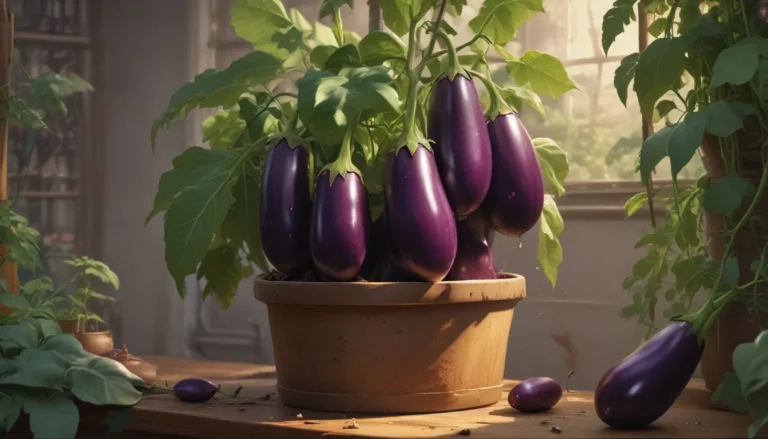A Comprehensive Guide to Growing Heirloom Fruits and Vegetables with 11 Unique Varieties

Heirloom fruits and veggies are taking center stage in the gardening world, and for good reason. They not only look gorgeous but also taste amazing. With a rich heritage and a long lineage of seeds passed down through generations, heirloom varieties offer a glimpse into the past when diversity in produce was plentiful.
The abundance of different types of heirloom fruits and vegetables resulted in stronger, better-tasting, and healthier plants. Unlike the lackluster produce often found in grocery stores, growing heirloom varieties at home can open up a world of flavors and colors that will delight both your eyes and taste buds.
In this article, we’ll delve into the world of heirlooms, exploring their value and history. We’ll also highlight 11 old-time vegetables and fruits that you can grow in your own garden to experience the magic of heirloom produce.
Unveiling the World of Heirlooms
Heirloom vegetables are the pure descendants of old varieties that have stood the test of time. Passed down through generations, these seeds have preserved a rich tradition of genetic diversity, resulting in outstanding crops year after year.
The age-old practice of seed saving and sharing has kept these ancient varieties alive, ensuring that they remain true to their origins. Heirloom plants acclimate to their environment, becoming stronger and more resilient with each passing season.
To be classified as an heirloom, a variety must have been introduced before the advent of hybrids in 1951. These rare seeds, with a direct line of ancestry and no genetic engineering, boast a history that spans hundreds of years and crosses international borders.
Heirloom varieties often bear the names of the passionate gardeners who first cultivated them, becoming a part of their legacy. Thanks to the efforts of devoted gardeners and organizations like Seed Savers, these precious varieties are flourishing once more, gracing gardens worldwide.
Embracing the Tried and True
The essence of heirloom vegetable preservation lies in the art of collecting and saving seeds. In the past, before the era of commercial nurseries, seed saving was a necessity to ensure a consistent crop year after year.
Heirloom varieties reproduce “true to seed,” meaning they grow into plants identical to their parent plants. This natural phenomenon, known as open pollination, is what gives heirlooms their characteristic consistency and charm.
While growing heirlooms in your garden, it’s important to consider the possibility of cross-pollination with non-heirloom varieties. Engaging in open pollination practices and mastering seed-saving techniques are essential skills for heirloom enthusiasts.
Exploring the Culinary Delights of Heirlooms
Heirloom vegetables are a culinary delight, boasting a wide array of colors, shapes, and textures that add an element of surprise to your garden and plate. These old-time treasures produce bountiful harvests throughout the growing season, ensuring a steady supply of flavorful produce.
From vibrant tomatoes and peppers to luscious beets and carrots, heirloom varieties offer a sensory feast of colors and flavors. Their uniqueness and versatility make them a favorite among both seasoned gardeners and budding enthusiasts.
11 Old-Time Fruits and Veggies to Add to Your Garden
- Yellow Pear Tomato
-
Lycopersicon esculentum ‘Yellow Pear’
-
Lolla Rossa Lettuce
-
Lactuca sativa ‘Lolla Rossa’
-
Moon & Stars Watermelon
-
Citrullus lanatus var. ‘Moon & Stars’
-
Henderson Lima Bean
-
Phaseolus lunatus ‘Henderson’
-
Brandywine Pink Tomato
-
Solanum lycopersicum ‘Brandywine Pink’
-
Rainbow Carrots
-
Mixed Variety Daucus carota subsp. sativus
-
Big Jim Peppers
-
Capsicum annuum ‘Big Jim’
-
Blue Hubbard Squash
-
Curcubita maxima ‘Blue Hubbard’
-
Purple Orach
-
Purple Atriplex hortensis
-
Royal Burgundy Beans
- Phaseolus vulgaris ‘Royal Burgundy’
-
Lemon Cucumber
- Cucumis sativus ‘Lemon’
Each of these heirloom varieties embodies the rich history and unique flavors of old-time produce. Their diverse characteristics and culinary attributes make them a must-have addition to any garden.
Preserving a Proud Heritage
The allure of heirlooms lies in their ability to transport us back to a time when homegrown produce was a way of life. As we cultivate these rare seeds in our modern-day gardens, we pay homage to our ancestors and the legacy they left behind.
While heirlooms may pose some challenges in terms of growth and maintenance, their exceptional flavors and colors are well worth the effort. Balancing heirloom varieties with modern hybrids can ensure a successful harvest while preserving the integrity of these ancient plants.
Embrace the Tradition of Heirloom Gardening
Embark on a journey into the world of heirloom fruits and vegetables by cultivating these time-honored varieties in your garden. With their rich history, unique flavors, and vibrant colors, heirlooms offer a truly exceptional gardening experience that will delight both novice and experienced gardeners alike.
So, what are you waiting for? Dive into the fascinating world of heirlooms and bring a touch of history and flavor to your garden this season. Share your favorite heirloom varieties and your gardening plans for the upcoming year in the comments below!
If you found this article informative, you may also enjoy exploring these gardening guides:
- The Art of a Survival Garden: Tips for Growing Your Own
- Harnessing the Power of Soil Inoculants and Microbes in Your Garden
- Succession Planting: A Guide to Growing Crops for a Continuous Harvest
In conclusion, heirloom fruits and vegetables offer a unique glimpse into the past while providing a rich tapestry of flavors and colors for gardeners to enjoy. By embracing the tradition of heirloom gardening, you can cultivate a diverse array of produce that not only tastes delicious but also tells a story of generations past. So, why not add a touch of heritage to your garden this season by growing these timeless varieties? Happy gardening!





